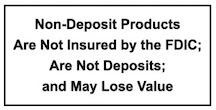Building for Innovation
The term “innovation” is often used to describe the latest technologies or construction methods in a particular sector. But if buildings are to be truly innovative, then the design process must be participatory and multi-disciplinary. Let’s examine how all people involved in developing, constructing, financing and operating real estate can foster innovation throughout the entire process.
If a building is to be truly innovative, then the design process must be participatory and multi-disciplinary.
The process of building innovation is not a one-way street. It must be participatory, multi-disciplinary, collaborative and inclusive. This can only happen if your building design is open to feedback and iterative improvements in response to stakeholder input.
Finally, you need to keep in mind that transparency enables collaboration; agility fosters innovation.
Customized financing models can help ensure that innovative design and construction become more commonplace in commercial real estate.
If you’re an architect, a developer or a contractor, how can your business benefit from innovative design and construction?
It all starts with the lender. If a lender is willing to provide financing for creative projects, then developers will want to build them and property owners will want to lease space in them. That gives architects and contractors more freedom. It also makes it easier for cities to take risks on urban planning projects that may not be profitable in the short term but could pay off over time by improving quality of life and reducing costs associated with infrastructure problems like flooding or traffic congestion.
It’s critical for investors to understand how new construction technologies are impacting building performance and expected returns.
There’s no denying the impact of technology on the construction industry. It’s changing how buildings are designed and built, which is being felt in the market. Technology is being used in new ways to improve energy efficiency and reduce costs while providing valuable data that can inform future investments.
Investors need to understand how these changes affect their investments because they can result in higher returns when correctly deployed—or higher risk if not implemented properly.
Developers should consider how emerging technologies can increase the appeal and economic value of their properties — before the competition does.
At a more impactful level, new technologies are improving safety in buildings through increased connectivity between systems (such as fire alarms or security systems) or by incorporating other technologies into the construction process itself — such as 3D-printed components that can be incorporated into walls or ceilings.
In addition to providing additional benefits for existing tenants in an existing building stock, these changes also open up opportunities for developers looking to build from scratch: By incorporating new tech into construction projects from day one — rather than retrofitting them later — developers will be able to create safer structures that save money on maintenance costs over time by making it possible for fewer repairs to be conducted during occupancy periods; they’ll also benefit from increased property values since people will pay more rent when it comes with added features like better air conditioning systems or improved insulation against noise pollution outside their windows so they don’t have to hear traffic while trying to sleep at night!
This is a time of incredible technological change, and developers should consider how emerging technologies can increase the appeal and economic value of their properties — before the competition does. At a basic level, new technologies make buildings more energy efficient, environmentally friendly and attractive. They also make them more functional and comfortable for tenants to use.
In today’s dynamic environment, adaptive reuse is often a smart way to create or expand space in an urban area.
In today’s dynamic environment, adaptive reuse is often a smart way to create or expand space in an urban area. When it comes to developing new projects, thoughtful planning can turn potential problems into opportunities.
For example: An area with a surplus of old warehouses that are no longer used for their original purpose due to technological advances and changing consumer preferences. In many cases, the buildings are still structurally sound and just need some work on the interior before they’re ready for new tenants. These properties offer incredible opportunities for creative companies looking for unique office spaces with high ceilings and exposed brick that give them an edge over competing businesses.
If we want to build structures that meet the future needs of society, we have to involve a broader range of stakeholders in the process.
First, we need to involve a broader range of stakeholders in the process from the beginning. This means involving people with disabilities and other marginalized communities, who are often a part of many planning processes but not necessarily included in the final plans. It also means engaging with the community at large, including children and young adults who may have ideas that haven’t been considered yet.
We can do this by using technology on our end to improve communication between parties, track progress on projects as they’re being built (and before they’re completed), improve efficiency when it comes to resources such as water or energy consumption (or even garbage collection). We can also use technology to ensure safety measures are taken into account when designing structures; think about how many buildings have windows without any kind of protective glass installed!
And finally: ensuring that these new designs incorporate sustainability principles into their strategy means considering things like carbon footprints or whether materials used were harvested sustainably. If we want our buildings to not only function well today but for generations into future then we need innovative thinking like this!

